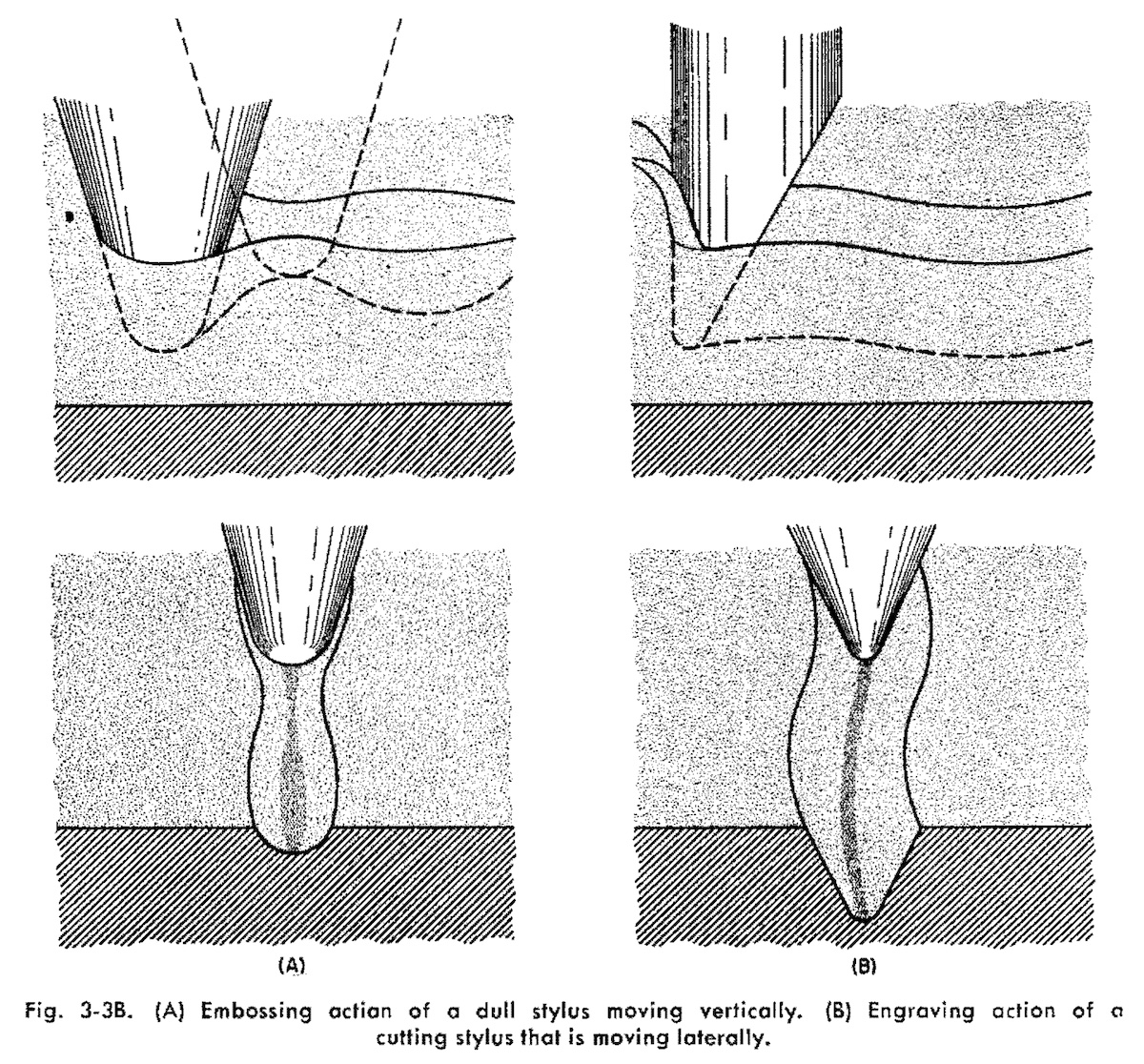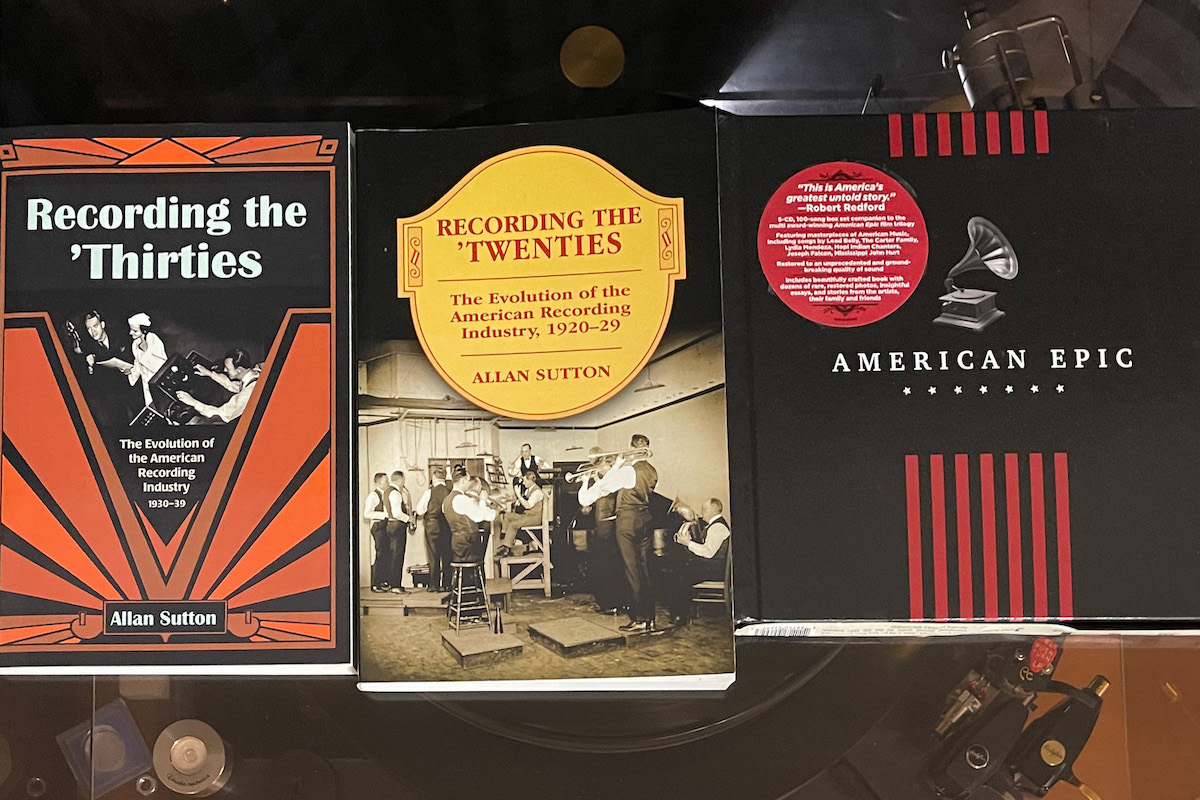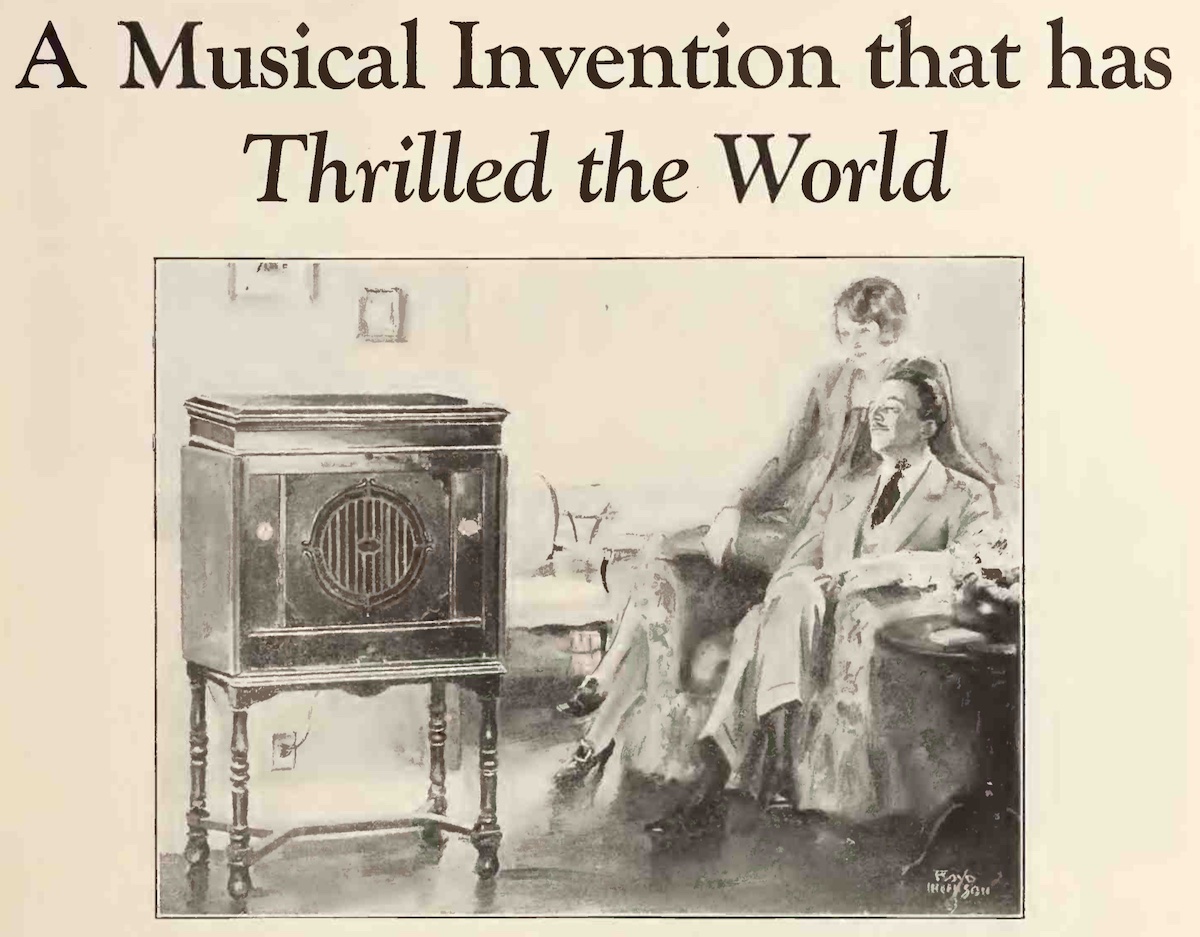Things I learned on Phono EQ curves, Pt. 4
前回 は、大恐慌時代の1930年代前半、WE特許使用料回避のため生まれたBlumleinシステムや、当時のRCA VictorやColumbiaの状況など、あれこれについて調べました。
On the previous part, I studied on the history of the improvement of disc recording technology for commercial discs, including the Blumlein system, situations of RCA Victor and Columbia in the 1930s (during the Great Depression), etc.
今回は、民生用ではなく、映画用・放送局向けのレコード技術 の話、そして初めてS/N比向上の目的で 意識的に高域プリエンファシスが用いられた録音技術 について学んでいきます。
This time, I am going to continue learning the history, from the disc recording technology for professional talking motion pictures and broadcast stations (not regular records for consumer market), and the very important technology that consiously used treble pre-emphasis for the first time in history, to increase S/N ratio.

source: “The Recording and Reproduction of Sound”, Oliver Read, 2nd Edition, 1952, p.21, Fig. 3-3B.
縦振動記録(左)と横振動記録(右)の比較



